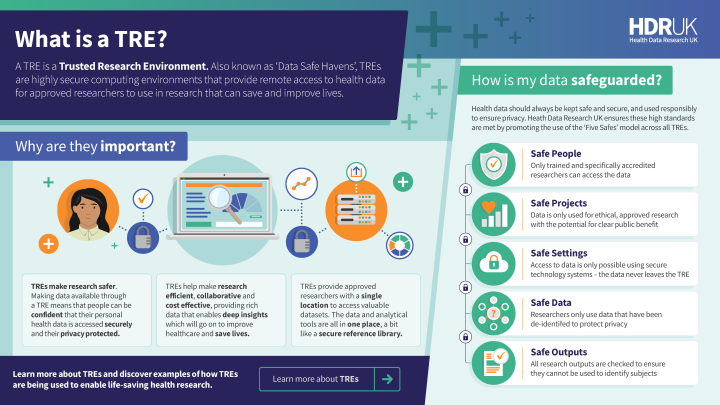Risk of severe COVID-19 outcomes after autumn 2022 booster vaccinations
February 2024: Research published in the Lancet Regional Health - Europe uses national UK data to explore severity of outcomes after 2022 autumn COVID-19 booster vaccinations.
Risk of severe COVID-19 outcomes after autumn 2022 COVID-19 booster vaccinations: a pooled analysis of national prospective cohort studies involving 7.4 million adults in England, Northern Ireland, Scotland and Wales
Stuart Bedston; Almaghrabi, F; Patterson, L; Agrawal, U; et. al.
The Lancet - Regional Health Europe
Published online on: 12 December 2023 (officially published February 2024)
Available online at: https://doi.org/10.1016/j.lanepe.2023.10081
Summary in plain English
Background
The prevalence of the Omicron variant was a significant issue throughout the COVID-19 pandemic. Given concern for vaccine variant-mismatch related to Omicron, the UK Medicines and Healthcare products Regulatory Agency (MHRA) authorised an autumn 2022 booster vaccination program using two updated booster vaccines ahead of the autumn and winter periods, from late 2022 into early 2023.
These two boosters were named ‘Spikevax bivalent Original/Omicron’, made by Moderna, and ‘Comirnaty Original/Omicron BA.1’, made by Pfizer. This study uses 4 nation data to investigate the severity of COVID-19 outcomes, such as hospitalisation or death, after people received the above autumn 2022 booster vaccines.
Why did we carry out this work?
Previous research using Scottish data explored risk factors for severe COVID-19 outcomes after the initial booster dose and risk profiles in adults who received their first vaccine or were fully vaccinated.
Find out more about our earlier work
Current UK policy offers booster doses to those who are at risk and monitoring changes in these groups is important to improve healthcare outcomes. However, there is limited research using whole population data analysing the uptake and impact of the autumn 2022 booster dose.
In this study, we analysed UK national data to identify risk factors for those who received an autumn 2022 booster dose and had severe COVID-19 outcomes. We looked at health and population characteristics of those admitted to hospital, who died and who received COVID-19 therapeutic treatment.
What data did we use?
We studied adults in England, Scotland, Wales and Northern Ireland who received a COVID-19 booster vaccine between 1 September 2022 and 31 December 2022.
More specifically, we looked at individuals who:
-
Were aged 18+;
-
Previously received at least 3 COVID-19 vaccinations;
-
Received a booster dose vaccination, with a two-week follow up period (to allow for a full immune response) within the study period;
-
Received either the Spikevax (Moderna mRNA-1273) or Cominarty (Pfizer BioNTech BNT161b2) booster vaccine.
To do this, we used routinely collected health data from patients across the four UK nations. The datasets are stored in each UK nation, in a Trusted Research Environment.
|
UK Nation |
TRE / Data partner |
Size |
Website link |
|
England |
ORCHID
|
19M + |
|
|
Northern Ireland |
Honest Broker Service |
1.9 Million |
Honest Broker Service - Business Services Organisation (BSO) Website (hscni.net) |
|
Scotland |
Public Health Scotland via EAVE II |
5.4 Million |
|
|
Wales |
SAIL Databank |
3.2 Million |
Trusted Research Environments (TRES) are highly secure computing environments providing remote access to health data for approved researchers. We use them to carry out research across various scientific domains, to save and improve lives.

Each of our data partners have their own processes for maintaining patient confidentiality and keeping data secure. Find out more by clicking on the links below.
SAIL Databank
Privacy by Design - SAIL Databank
EAVE II / PHS
Organisational background - Our privacy notice - Public Health Scotland
The datasets are made-up of de-identified, linked, General Practitioner (GP), hospital, medication prescription, mortality and vaccination data. In total, 7,451,890 people met our research criteria.
What did we find?
How many severe outcomes?
Of the 7,451,890 eligible individuals who received their 2022 autumn booster vaccine, 3,500 were admitted to hospital and/or died due to severe COVID-19, despite receiving their 2022 autumn booster vaccine.
Who is most at risk?
Our results are largely consistent with those of our previous study. This earlier work identified a range of factors that were linked to an increased risk of a person experiencing a COVID-19 hospital admission and death despite receiving their booster.
The risk factors we identified included, but not limited to, people who were:
- Of male sex
- Aged 80+
- Immuno-compromised
- Living with stage 4 or 5 chronic kidney disease
- Living with multiple health conditions
Our current analysis also identified a new risk factor: large households. People living in households of 11 or more were 50% more at risk than those living in two person homes.
We also found that the risk associated with some known risk groups were higher than previously thought. For example, at least a two-times increase was linked to*:
-
Down’s Syndrome
-
Dementia
-
Heart failure
-
COPD
*Data available for England, Scotland and Wales only
Why is this important?
In this study, we have provided UK-wide evidence of factors that contribute to risk for severe COVID-19 outcomes in vulnerable groups, despite receiving their second booster vaccine.
Our provides a range of insights from confirming known risk factors, to identifying new ones and establishing some to have a higher risk than previously thought.
These findings can be used to inform the UK’s Joint Committee on Vaccination and international policy as a means to prioritise individuals for future booster programmes.


